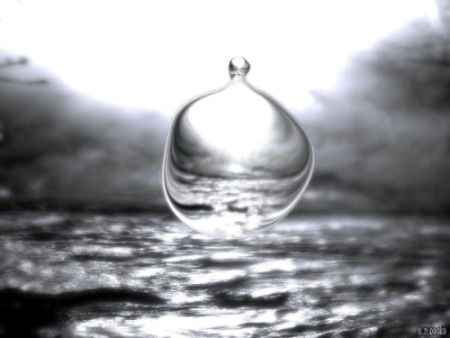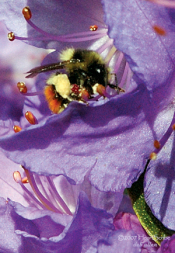when mama cries
/ www.flamingpear.com
www.flamingpear.com
I do remember my mother crying. I don’t know whether she cried more than most women. She just seemed more comfortable doing it, less reserved, unapologetic. I do remember her crying, and I never really thought there was anything wrong with it. I think it is my mother I have to thank for the ease I have always had releasing my own tears.
I do remember worrying, though, especially when her melancholy would carry on for a while. When she felt blue. When she would spend quiet time with herself, caring for the plants in our garden, rather than engaging with my sister and me as we played nearby. In those moments, I wanted her to cheer up. I wanted to be able to make her feel better. Sometimes I could, but not always.
One day, maybe it just got to be too much for her. And she left, to take care of just herself.
Have you ever read the book or seen the movie, The Hours? About how women throughout time have carried their sorrows? That story just gets me from such a knowing place. After watching it in the theater, my sister and I clung to each other, cathartic tears streaming down our cheeks until the credits had unwound and the lights had come back up in the theater. I looked at my sister stunned and eventually got up to wobble home on spaghetti legs.
Melancholia
The blues
Feeling down
Depression
Mental illness
We are so frightened of these, aren’t we? So stunned by them. I find it irritating when depression is referred to as something surprising…
You’re depressed?! How baffling! How mysterious! How could you possibly be depressed when your life is so good? Look at all the blessings around you! Cheer up! You can do it if you just choose to!
As something that has to be cured, overcome...
We must address this right away! You can feel better with the right help. You have to feel better! We must absolutely help you to feel happy again!
As something that has to be medicated, conquered, eradicated…
There is just so much depression in our society today. But now we know how to treat it! Now we know how to beat it! Now we can free you from its hold with the right combination of science and counseling.
Trust me, I am a big fan of therapy… It has saved me many times from sinking to a place from which I might never return. Zoloft helped me once too, when I just couldn't get my head above water no matter how hard I tried.
But can we look at depression, maybe, in a different way? See it. Recognize it. Say hello to it rather than shoving it down?
Hello melancholy feelings! Hello unexplainable sorrow that won’t go away in an appropriate amount of time! Here you are again! Welcome. I see you. I hear you. I feel you. I befriend you. Tell me what you need to share with me.
As someone who comes from a long line of people who – egads! – have experienced great depression (they called it melancholia back then) for a number of reasons (they were Holocaust survivors, they lost everything and saw horrible things), and some who have felt it without any apparent cause, it just annoys me the way we approach it in our larger culture.
As a woman who has struggled with my own depression, my own melancholia, my own sorrow and loss and grief and misery – several times, even before losing my child – I have a bone to pick with the way we approach our difficult emotions, how we hold them… or rather how intensely we try to shake them off and as far away from us as possible.
.::.
Shortly after Tikva died, an old friend sent me Miriam Greenspan’s book, Healing Through the Dark Emotions. Finally, I thought after reading the introduction, somebody who gets it! Somebody who understands that the way to get through the hard stuff is to go through it. To be with it. To listen to what it has to teach.
Greenspan lost her own first child, who died just weeks after he was born. Her second child was born healthy. Her third child was born with a serious physical disability. It is clear that her children have been her greatest teachers. But it is not a book about losing a child, nor one about parenting a child with special needs.
As a mother, as a human being, and as a psychotherapist with years of experience in private practice, Greenspan writes about three primary emotions, which she calls the dark emotions – grief, fear and despair. She writes about the alchemy possible when we can really feel them, really experience them, go deeply into the darkness that usually scares us away. And she writes of coming through to the other side, the “transformational process by which grief becomes gratitude, fear turns to joy, and despair opens a doorway to a more resilient faith in life.”
Greenspan writes about compassion, about how it is almost impossible to live in our time, in our day, in our society, with so much sorrow and struggle all around us – and not feel dark emotions. Why, then, do we feel there is something wrong with us when we feel depressed? Why are we told so automatically that it is something that should and can be fixed?
I had so many ah-hah! moments when reading her book. Not because it was something I didn’t already know, but because it just resonated with me as truth, and it was a reminder that came at just the right time…
That there is no way I am going to truly survive – and by survive here, I really mean to thrive after (because we are allowed to thrive again, we are!) – the death of my child if I don’t go first to those dark places in my soul, look them in the eye, and ask them what they have to teach me.
It’s that hindsight is 20-20 thing: I have learned enough from my less successful attempts at pushing down my grief in the past to know that this won’t get me far for very long. I have learned that I certainly won’t get anywhere remotely close to growth by ignoring what needs attention in the dark places in my soul. I tried that in high school, shortly after my mother left, and I found myself two years later with 65 extra pounds of weight on my body and an anger shoved so deep inside that I found myself too depressed to get out of bed.
.::.
Here I am now, ten and a half months since my sweet girl died. More than a year since she was born so fragile. Almost a year and a half since her ultrasound, when my world as I knew it imploded and my life changed forever in ways I am only now beginning to understand.
“Grief becomes gratitude, fear turns to joy, and despair opens a doorway to a more resilient faith in life.”
I’ll tell you something that isn’t easy to admit, especially here…
I do feel gratitude.
I do feel joy.
I do still have faith.
Something is being transformed deep inside me since – because – I lost my Tikva. I don’t think it would have happened if she hadn’t been who she was. If she hadn’t come and gone so quickly. I consider it her gift, what I get instead of my second child here in my arms, healthy and well. It is a gift of compassion. True compassion, which starts with compassion towards myself. Begins with patience and understanding towards myself as I go through the messiness of the ups and downs of each day.
When I read about the possibility for gratitude, joy and faith months ago, I opened up to the possibility that I could get there as I went through this dark passage. It’s true. They’re there – the gratitude for Tikva, the joy I feel when I see a hawk flying above or feel Dahlia climbing my body as if I were a jungle gym, the faith I have in good things ahead. They’re there – even when I only feel them in glimmers every once in a while, balanced by their darker counterparts.
I’ll keep going there, through the darkness, towards the light. And as I do, I’ll continue to cry as much as I need. Cry at the sorrow and at the joy. These days I wonder if one can truly exist without the other. Maybe that’s what Tikva came through to teach me.
.::.
How do you experience your dark and your light emotions? What are the ways in which you go there, deep into the shadows or leaping towards joy? Do you sometimes avoid your more difficult emotions? What works for you in navigating all the places in your soul?



